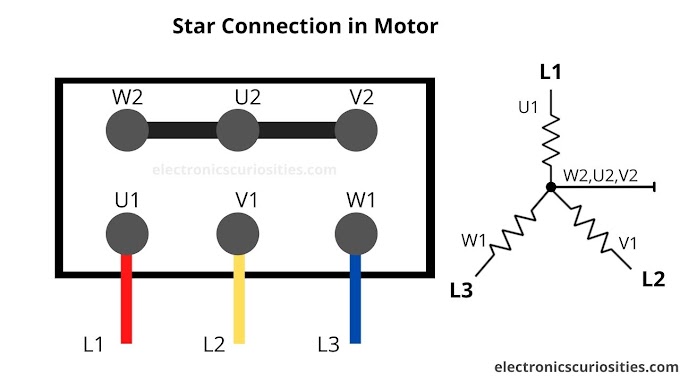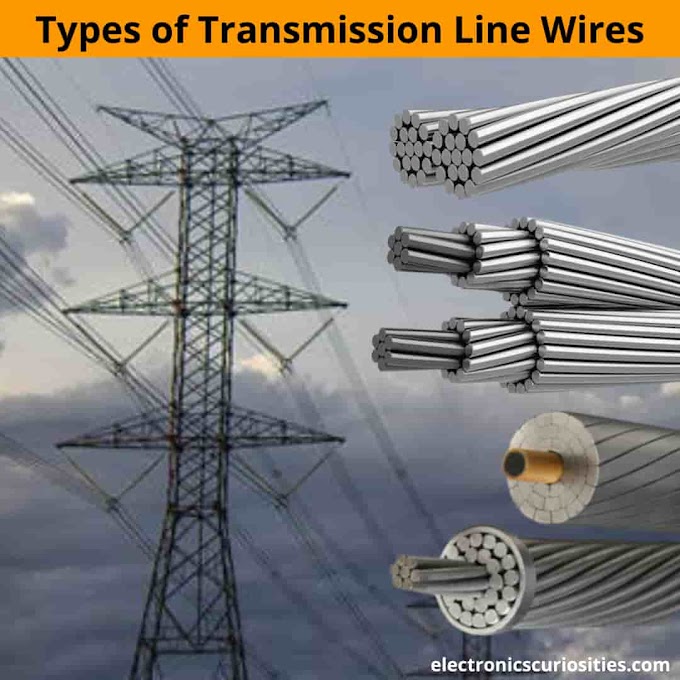 |
| Transmission line Tower |
Why aluminum wire used in transmission line?
Let us see why the aluminum wire is always used in the transmission line.
The answer in many people's minds is that aluminum is cheaper, but there is not one, but there are many reasons behind this question. So today we will know all these points that Why aluminum wire used in Transmission lines?
As we all know that we select any conductor by looking at its conductivity. Meaning we always use the wire inside which the resistance is minimum so that current can flow easily.
So if we talk about the best conductivity material of electrical, then silver comes first in the number. Silver is a material in which the current passes easily. The conductivity of silver is said to be the best.
Also read - Why RCCB is a must? Why is RCCB necessary? What is RCCB? How does RCCB work?
Electrical resistivity and conductivity
 |
| Resistivity and Conductivity Table |
After this, the name of copper comes on the second number, after copper, gold comes on the third number.
And if we talk about aluminum, then it comes at number 4 in this list of conductivity.
So, now you know which material is the best conductor. But here we have a problem that the price of silver and gold is very high. So it is completely impossible to use the wire of both these materials.
Because a kilogram of silver costs around 40,000 rupees. And if we talk about gold, then it is about 40,00,000 kilograms. Which is much more expensive.
So now we have only two materials left.
- Copper
- Aluminum
The cost of both these materials is very low. You get 1 kg of copper for 500 rupees(7-8 dollars), while the same aluminum gets 1 kilogram for just 100 rupees(2 dollars).
So now the main question that comes before us is that we have two types of conductors copper and aluminum. Then why do we use only aluminum conductors?
Benefits Aluminum in Transmission lines
So, now we have to understand the difference between copper and aluminum.
Copper vs Aluminum
 |
| Copper vs Aluminum |
Difference between Copper and Aluminum
Resistivity- Copper is a better material than aluminum in terms of resistance. Copper resistance is 60% less than aluminum.
For example, if we have copper and aluminum conductors of the same size, if the resistance of the copper wire is 1 ohm, then the resistance of an aluminum wire of this size will be 1.6 ohms. So we came to know that the resistance of copper is low.
copper-vs-aluminum-wire-in-transmission-lines
But, there is a rule of resistance that if we enlarge the size of the material, it will make it thicker. The resistance then increases.
So if we do this with aluminum, if we double the aluminum wire, the resistance of the wire will be reduced from 1.6 to 0.8. And it is in this way that we solve the problem of resistance of transmission wire.
Weight - The second major difference after this is in the weight of these two copper and aluminum. And this point is very important for the wire selection of the transmission line. Because we all know if our wire will have more weight. So at that time we also have to install towers of high power, so that it can withstand the wire of high weight.
This means that the difference in the weight of the wire directly comes at the cost of the tower.
So, if we talk about the weight of copper and aluminum, then the weight of copper is more than aluminum.
If we understand this by example, if a copper wire weighs 1 kg, the aluminum wire of the same size will weigh only 0.33 KG.
copper-vs-aluminum-weight
In addition, we used aluminum wire to double use copper due to resistance. So even if we weigh double aluminum wire, it weighs only 0.66 Kg, which means 0.34 Kg less than copper.
So if we use aluminum, the cost of building transmission line towers will come down, because the aluminum wire is lighter in weight than copper.
Cost-wise (because of the price) - As we learned in the beginning that 1 Kg of copper costs around 500 rupees(7-8 dollars), while in aluminum we get only 100 rupees(2 dollars) kilograms. So even if we double the thickness of this aluminum wire, the price of 2 kg of aluminum will be only Rs 200, which is about 60% less than copper.
Long-life - As we all know that we do not use insulation on the transmission line wire. So if we use copper wire outdoors without insulation, then at this time we have to give a lot of maintenance to copper wire.
Because we all know that corrosion takes place very quickly over copper. And if we use the same aluminum, then there is no problem with rusting in it. So if we use aluminum instead of copper, it will be maintenance-free and the life of this wire will be more than copper wire.
Also Read - What is Carbon Brush? Why do we put it in a motor?
Why we only use aluminum wire in overhead transmission lines?
So, you may have come to know, there are not one but four main reasons behind aluminum wire usage.
1. Resistivity
2. Weight
3. Cost-wise (because of the price)
4. Long life
Questions Related to transmission lines
Why are the transmission cables made of aluminum?
The aluminum wire has a cross-section 1.5 times larger than the transmission line similar to a copper wire, but it is twice as light. Weight is one of the most important parameters of long-distance power lines. Therefore, only aluminum cables are used for large high power cables. Aluminum has low strength, high ductility, good corrosion resistance, and good conductivity, making it suitable for use as an electric conductor to transmit and distribute electricity.
Are the AC or DC transmission lines?
Most transmission lines have a high level of three current alternating currents (AC), although single-phase AC is sometimes used in rail power systems. High-voltage direct-current technology (HVDC) technology is used to operate most efficiently over very long distances (usually miles).
What metal is used in transmission lines?
Aluminum steel conductor reinforced
The most common conductor used for transmission today is aluminum conductor reinforced steel (ACSR). And to see more use is an all-aluminum-alloy conductor (AAAC). Aluminum is used because it has about half the weight and low cost of comparable copper resistance.
Why can't copper be used in transmission lines?
Copper is a good electric conductor but we use aluminum as conductors for transmission lines. The main reason for not using copper is cost. the conductivity of copper is higher than that of aluminum. So for the sake of cost, we use aluminum instead of copper.
Why is Aluminum better than copper wire over?
While only 61% aluminum conductor operates as a copper conductor of the same size and is three times lighter in weight making it easier to handle. For this reason, aluminum is favored by large size wires and high power distribution cables.
Can I use copper in the transmission lines?
As copper has excellent electrical properties. It has a high conductivity. So it is good for the transmission line but the cost of copper is very high and the gravitational force is high because that is not used for the transmission line.
What high power transmission lines are made of?
The high-power transmission lines are made of copper or aluminum lines that drive the lines suspended by towers. Most transmission lines use high voltage three-phase alternating current (AC). High voltage direct current (HVDC) technology can be used to improve efficiency at extremely long distances.
Why are high power lines not restricted?
At higher limits, the installation will make the conductors much heavier to use on common external power lines. In the upper parts, the divider is designed twice.
Are high power transmission lines insulated?
No, In fact, 90% of external power cables are empty and unplugged. They may have weatherproof coverage, but do not provide protection or protection from lightning. So no power cord is completely safe to touch or get too close, and forever.
Thank You!
Happy Learning!



